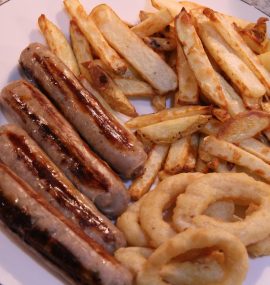Can't East Just One Munchie?
There's a Reason for That
The food industry has developed sophisticated and highly effective ways to entice us to buy their products. David Kessler wrote the eye-opening book, The End of Overeating – Taking Control of the Insatiable American Appetite. He wrote that Big Food has created foods with precise combinations of sugar, fat, salt, and flavoring agents that make their products essentially irresistible. He noted that rise in sales of hyperpalatable foods mirrors the rise in obesity in the US and elsewhere starting around 1980.
Michael Moss, author of the best-selling book, Salt, Sugar, Fat, follows in Kessler’s footsteps with a new book, Hooked – How the Food Giants Exploit Our Addictions. Moss begins by examining the concept of addiction. Scientists differ on whether food is addictive, but the dispute may largely reflect nuances in how addiction is defined. Moss cites with approval a definition of addiction uttered by a former COE of Philip Morris, the tobacco and processed food giant. Addiction is a repetitive behavior that some find difficult to quit. By this standard, ultra-processed food is addictive.
Humans evolutionarily have had relatively little access to sugar and fat, especially when they’re combined. Foods with both sugar and fat alert the brain via separate pathways, thereby creating stronger arousal than either alone. Our human and pre-human ancestors highly valued food calories. Thus, we modern humans manifest our heritage by being exceptionally attracted to foods that contain sugar and salt. Moss comments that the food giants spend large sums of money figuring out how they can attract more people to eat their products. No surprise there. But their research now includes neurological studies that track how hyperpalatable foods trigger our brain’s reward system.
What can we modern humans do to counter the intensive advertising of processed foods and their ability to cause many of us to overeat? Psychologists have identified several tactics.
Identify cues in your environment that lead you to eat processed foods. Avoid these cues as much as possible. If you’re tempted to stop by a fast-food joint on the way home from work, take a different route home. If attractive packaging of processed foods at the grocery store gets you salivating, avoid walking down aisles with attractively packaged processed foods that especially appeal to you. Think soft drinks, deserts, and microwaveable dinners. Leave highly processed foods at the grocery store.
Choose less sweet versions of products. I ate vanilla yogurt for years. It contained 26 grams of sugar per serving, the recommended daily limit for women per the American Heart Association. I slowly weaned myself from highly sweetened yogurt and now happily eat plain Greek yogurt with 5 grams of sugar (none of which is added).
Eat dinner on smaller plates and bowls. Research by Brian Wansink at showed that people eat more dinner when it’s served on larger plates and in larger bowls and less on smaller plates and bowls.
Limit your consumption of liquid calories. Our bodies may not recognize the caloric value of what we drink. Think soft drinks, sports drinks, beer, and wine.
Avoid going to the grocery store when you’re stressed or hungry. At such times, your ability to leave ultra-processed foods at the grocery store diminishes.
When you become aware of the ultra-processed foods that you customarily eat, you can decide mindfully if you want to continue to eat them of not. You’ll Eat Better if you reduce your consumption of hyperpalatable foods and increase your consumption of veggies, fruits, beans, and whole grains.








